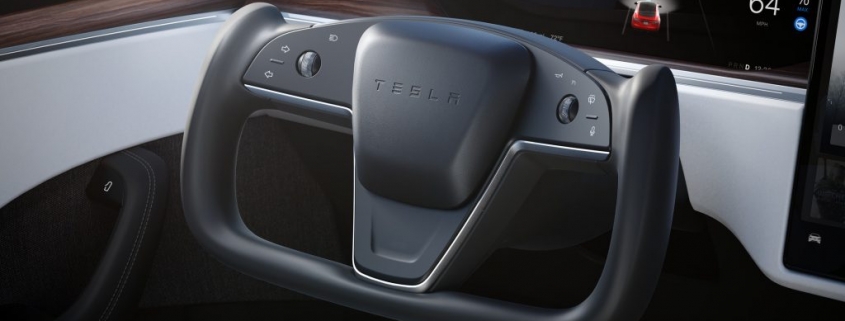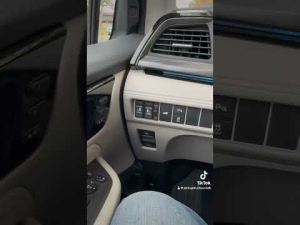Is the Tesla Model S Plaid’s Yoke Steering Wheel Really That Bad?
When a yoke steering wheel pops up on a concept car, many look and scoff. “That’ll never make it to production,” they say, and in most cases they’re right. But Tesla proved everyone wrong by fitting a yoke steering wheel in their Tesla Model S Plaid, and folks were pissed. At first, even the NHTSA couldn’t make heads or tails of it, but after being driven and drag raced this long, is it really all that bed?
The Tesla Model S Plaid yoke steering wheel has a learning curve, but you get used to it
I’ve watched a bundle of Tesla Model S Plaid reviews to find the answer to this question alone. And as each reviewer performed three-point turns or navigated city streets, the mandatory yoke steering wheel caused no problems. It handled like you’d expect a normal car to, allowing the wheel to slip through your fingers and return to the center position. Sure, you’ll miss the wheel every now and then, but eventually, your hands will fall into place.
And there’s no denying that a yoke steering wheel has a few advantages. For starters, it forces drivers to keep both hands in the three o’clock and nine o’clock positions, which is safest for car control and airbag deployment. And the yoke allows better visibility of the road ahead and the screen displaying information as you drive. And hey, if F1 drivers can handle it, so can you.
So this nonconventional wheel isn’t all that bad, and if the reinventing stopped there the yoke would be fine. But Elon Musk insisted on making it original and went a step too far.
The yoke steering wheel isn’t a problem, the button layout is
We say button layout, but they’re not buttons at all. Scattered around the wheel are touch sensors rather than physical buttons. And their surface area is vague, to say the least. Now, typically, the wheel is home to such controls as volume, Bluetooth, and car information. But on the Tesla Model S Plaid, that information is accessed through the two screens (one behind the steering wheel, one in the center). So what buttons are on the steering wheel?
Rather than your conventional stalks, the Tesla stuffed the blinkers, headlights, wipers, and even the horn in various nonintuitive positions. Sure, it makes the cabin look cleaner, but at the cost of added confusion. You don’t click the stalks up or down but press the buttons (and sometimes miss). And you don’t mash the center of the wheel for the horn, which is not only effective automotive communication but a great way to manage your anger. Instead, you press your thumb against the tiny horn icon.
Hod Tesla stopped engineering at the stalks, the yoke wheel would feel like any other wheel. Though there’s one issue that can’t be overlooked: safety.
Is a yoke steering wheel legal?

The National Highway Traffic Safety Administration (NHTSA) has been at odds over the yoke steering wheel since January. But Tesla has complied with all of the administration’s standards, with the NHTSA telling Car and Driver “NHTSA’s standards do not prohibit non-circular steering controls, but manufacturers must ensure the steering control meets all requirements for occupant impact protection.” In other words, it doesn’t have to be round, it just has to be safe.
So if you can get over the overly complicated button layout, then you can have a ludicrously fast car that does 0-60 in under two seconds (on a prepared surface). But the yoke steering wheel isn’t what kills it for most people, the lack of traditional stalks is.
RELATED: Mercedes EQS vs. Tesla Model S Plaid: Super Electric Cars?
The post Is the Tesla Model S Plaid’s Yoke Steering Wheel Really That Bad? appeared first on MotorBiscuit.







